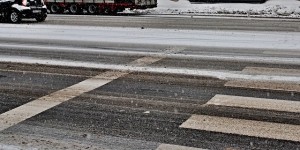Staying Alert on the Road: Road Safety Tips for Pedestrians & Drivers
When it comes to road safety, everyone, from pedestrians to drivers to cyclists, plays a part. After daylight savings time, we’re all adjusting to darker mornings and shorter days, and our diligence on the road may be compromised.
Even if we are alert and well rested, we can’t guarantee that our fellow motorists and pedestrians are. To enhance the safety of everyone on the road, we can take certain extra precautions to make our roads as safe an environment as possible for all travelers.
For Drivers
During the day:
- Create a distraction-free environment in your vehicle before you drive. If you must text, talk on the phone, eat, or fasten children or pets in securely, pull over to the side of the road to do so. Distracted driving has consistently surpassed drinking and driving as one of the top causes of collisions in Ontario. Do your part to avoid distractions behind the wheel
- Refrain from using cruise control in winter, as winter driving requires full control at all times. Give yourself plenty of time before a winter trip to make sure you don’t feel too to give pedestrians your attention and patience when they are crossing the street
- Know what to do when an emergency vehicle approaches. Drivers are required to bring their vehicle to an immediate stop and bring it as near to the right hand curb or edge of the roadway. The quicker drivers can respond to a siren, the more efficient this process can be for everyone
At night:
- Be extra aware of braking distance at night. Increase your travelling distance by several feet versus how far you travel behind someone during the day to ensure maximum response time
- Properly working lights are imperative to your visibility. Take a minute to walk around the outside of your car to make sure your lights – tail, brake and turn signals, are clean and also working properly. Refer to our guide to maintaining your headlights to make sure yours stay clean and bright all winter
- If you find yourself becoming drowsy when driving at night, pull over to the side of the road or into a parking lot for a nap. As little as 20 to 30 minutes of rest can have a significantly beneficial impact
- Never take the risk of getting behind the wheel after you’ve been drinking. Drivers with even a small amount of alcohol in their system are more likely to have impaired judgement, poor hand eye coordination and inability to recognize and anticipate potential danger
For Pedestrians:
- Dress to be seen, especially at night and on low-visiblity winter days. Wear brightly coloured clothing or carry a flashlight at night and when walking in storms
- Cross the street at marked crosswalks or traffic lights, not in the middle of the block or between parked cars. Do not cross once the “don’t walk” signal begins to flash
- When crossing the street, take out your headphones and refrain from texting so you can be alert to oncoming traffic. Especially at night, or at dusk after the time change with when the glare of a low setting sun may reduce visibility for drivers, make your senses fully available. Be sure to make eye contact with drivers before you cross the street
- Be extra cautious when boarding or exiting the bus or streetcar, as cars may not stop as they’re required to
- Teach your kids to adopt good road safety practices, such as recognizing traffic safety signals and the signals of a crossing guard. When it comes to crossing, teach kids to point (across the road with your hand to let drivers know you’re crossing), pause (until all vehicles have stopped), and proceed (looking both ways before you cross
For Cylists:
- Cyclists, like motorists, must ride on the right side of the road (except when two-way designated bicycle paths are in place), be sober, stop for stop signs and red lights, and signal turns
- Be seen and heard, no matter what time of day it is. Bikes are required to be equipped with a working bell or horn. Reflectors, a front light, and a strip of reflective tape on your backback or jacket can make you more visible to other road users
- Always ride defensively, anticipating the actions of other road users. Be aware that a car door could open at any time, a pedestrian or animal could dart onto the road without warning and debris on the road could make you veer
Being aware of potential dangers on the road is a responsibility for all who share it. This winter season, commit to being a responsible driver, pedestrian, or cyclist
